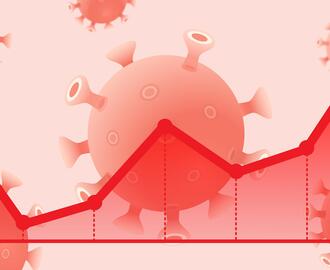Credit: AbsolutVision on Unsplash
Economy
MIT Sloan study shows public health interventions in COVID-19 pandemic could lead to faster economic recovery
By
CAMBRIDGE, Mass., April 1, 2020 – The COVID-19 pandemic has raised critical questions about the impact of public health responses on the economy. An important issue for policymakers is whether current interventions like social distancing have economic costs. In a recent study by MIT Sloan School of Management Prof., he analyzed the economic effects of the 1918 Flu Pandemic and found that public health interventions have no adverse effect on local economic outcomes. His study shows that cities that intervene earlier and more aggressively experience a relative increase in economic activity after the pandemic.
“In normal times, nonpharmaceutical interventions (NPIs) like social distancing and quarantines are bad for the economy. They make it more difficult for economic activity to take place, like going to work. This leads to the notion of a tradeoff between public health interventions and the economy. Policymakers are in uncharted territory, with little guidance on what the expected economic fallout will be and how the crisis should be managed,” says Verner.
To address these issues, Verner and his colleagues studied the economic effects of the largest influenza pandemic in U.S. history, the 1918 Flu Pandemic. They looked at the severity of the pandemic as well as the speed and duration of NPIs, which resemble many of today’s NPIs, including school, theater, and church closures, public gathering bans, and restricted business hours. The team analyzed how the pandemic impacted manufacturing employment, manufacturing output, bank assets, consumer durables, and mortality.
Their study highlighted that areas that were more severely affected by the 1918 Flu Pandemic saw a sharp and persistent decline in real economic activity. The data showed an 18% reduction in state manufacturing output for a state at the mean level of exposure. Exposed areas also saw a rise in bank charge-offs, reflecting an increase in business and household defaults.
“The patterns are consistent with the notion that pandemics depress economic activity through reductions in both supply and demand. Importantly, we also found that the more affected areas of the country remain depressed relative to less exposed areas from 1919 through 1923,” he said.
Comparing the speed and duration of NPIs across cities, the researchers found that cities that intervened more aggressively performed better economically the year following the pandemic. Reacting 10 days earlier to the arrival of the pandemic in a city led to an increase in manufacturing employment by around 5% after the pandemic. Similarly, implementing NPIs for an additional 50 days increased manufacturing employment by 6.5%.
“It’s clear from this data that NPIs work and there is no evidence that they lead to a worse economy. They are the most beneficial way to protect our health and the health of our economy. We can’t go back and act more quickly in the COVID-19 pandemic, but we can apply this information now. Lifting restrictions too early could make the economy worse by leading to a resurgence of the virus in an even more destructive pandemic,” he said.
Verner added, “This isn’t a choice about saving lives or saving the economy. We won’t have a normal economy if we lift restrictions too early.”
Verner is a coauthor of “Pandemics depress the economy, public health interventions do not: Evidence from the 1918 Flu” with Sergio Correia of the Federal Reserve Board, and Stephan Luck of the Federal Reserve Bank of New York.
About the MIT Sloan School of Management
The MIT Sloan School of Management is where smart, independent leaders come together to solve problems, create new organizations, and improve the world. Learn more at mitsloan.mit.edu.



